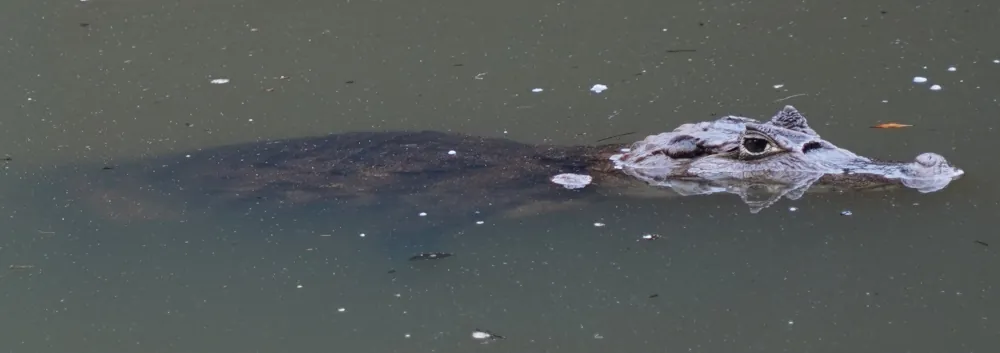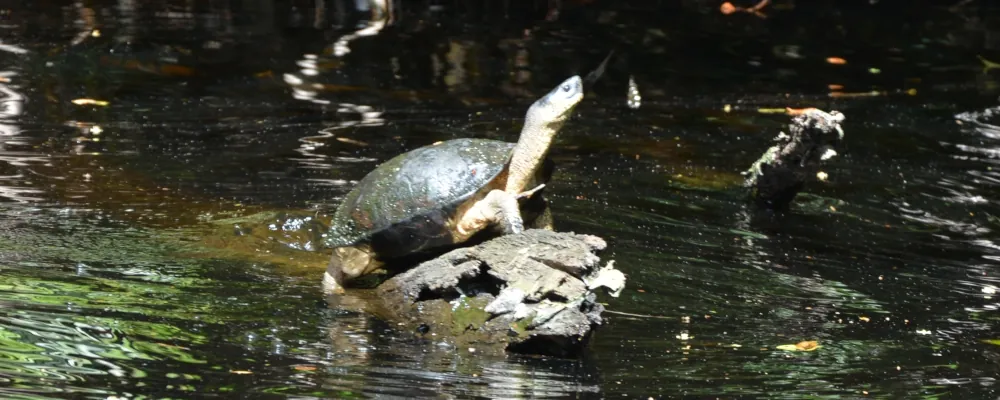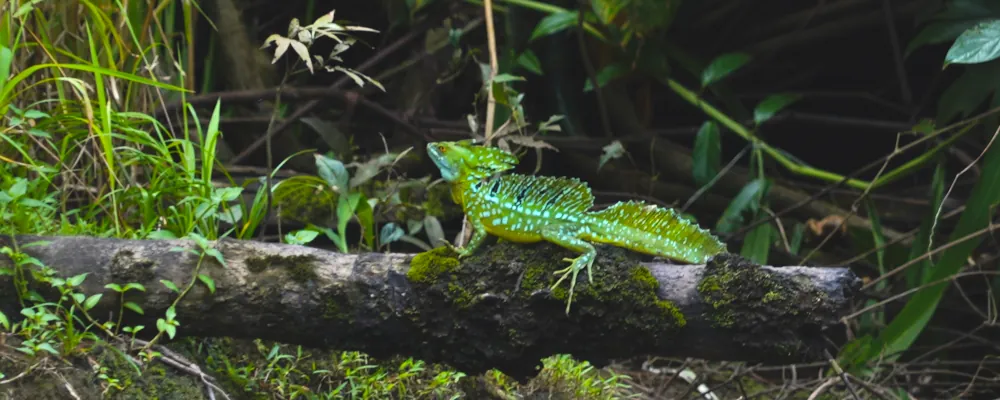Reptiles in Tortuguero
If you are curious about our cold-blooded friends, Tortuguero has plenty of species of reptiles. It is the perfect place for these creatures: places to hide, a lot of food sources and water, water everywhere. We are going to talk about three of the species you can find near our hotel.

Alligator
We cannot start this article about reptiles without mentioning the king of the Tortuguero’s scaled creatures. In the area, alligators are the dominant species, only second to humans. Do not worry as the Tortuguero alligators are not too big compared to humans and rarely get near boats or human settlements. Still, you have to be cautious and stay at a safe distance if you see one. These carnivorous animals tend to feast on smaller preys that dare to get near any water body the crocodile chooses as its lair. The lack of prey can force them to walk several kilometers in the dry land, only seeking another river or lake. They tolerate salt water but prefer manglers, rivers, lagoons, and swamps. Like any other reptile, they reproduce by laying eggs. They like to hang out in the sun for several hours to get their body temperature controlled.

Black River Turtle
The black wood turtle is a creature endemic to the Caribbean coast of Central America. Tortuguero’s slow waters are the best suited for these turtles because they love to eat mollusks. The slow currents allow the procreation of these and other kinds of creatures. This allows our reptile friends to capture prey easily on the river bank. But they do not only eat other animals but water plants and fruits that fall from the trees. These turtles have the particularity that they need several years to reach sexual maturity, hatching eggs until 15 or 20 years after being born. They like to sunbathe often, which brings a good chance of finding one in the open and getting a nice pic.

Green Crested Basilisk
If you are paying attention while you are visiting Tortuguero o any part of Costa Rica’s Caribbean area you’ll probably see a curious animal running on the water. You read it right! The green-crested basilisks, an endemic subspecies from Central America, can run at great speed plus their rear feet have long toes. When running these toes make contact with the surface creating small bubbles of air allowing the basilisk to remain over the water for a few seconds. Once the animal runs out of stamina, they just stop running and dip into the water. Since they are excellent swimmers this is no problem. They do this mostly when they feel in danger. The basilisk feeds on small mammals, insects, snails, worms, and mollusks. They spend most of the time resting on trees but not too far away from the ground.
If you are planning to visit Tortuguero, check OUR PACKAGES HERE. We are waiting for your visit.




